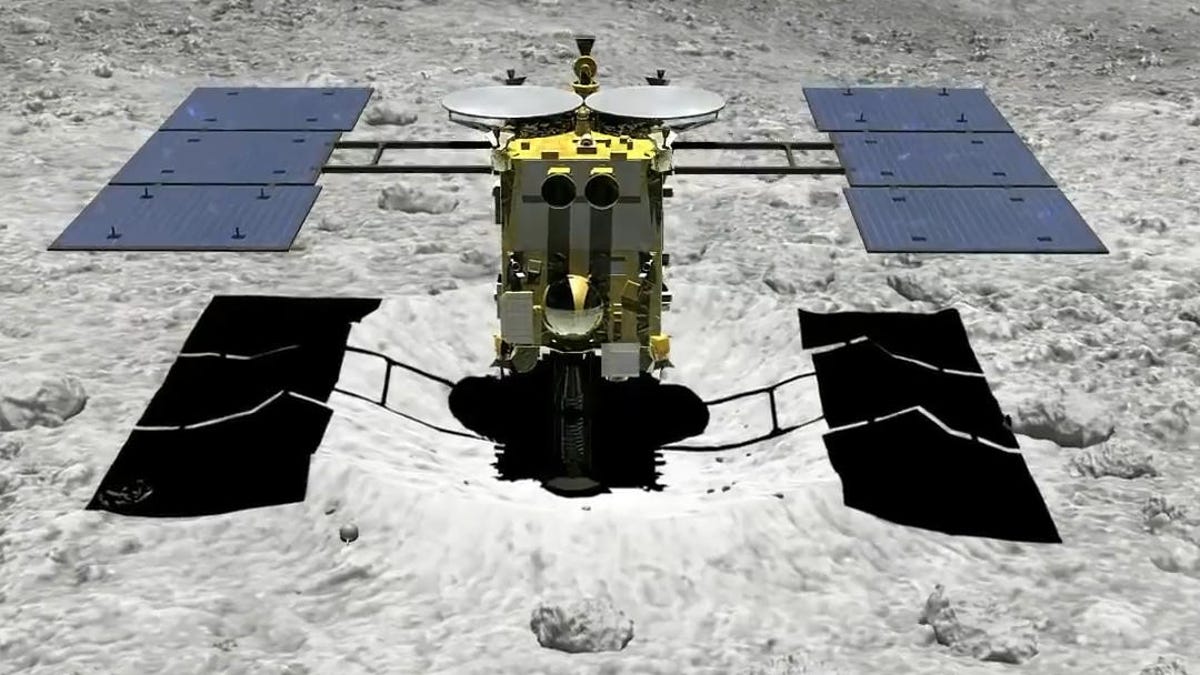Japan just bombed an asteroid with a copper cannonball
JAXA's Hayabusa2 spacecraft has a tumultuous relationship with the asteroid Ryugu that just got even more dramatic.

A rendering of Hayabusa2 at the asteroid Ryugu.
Japan's Hayabusa2 spacecraft has already fired a bullet at the asteroid Ryugu from close range to suck up a sample of the space rock. Now the mission has gone a step further by attempting to blast a new crater onto the surface of the object it's been orbiting for months.
The Japanese Space Agency (JAXA) announced just before 8 p.m. PT Thursday that it fired its "small carry-on impactor" (SCI) at Ryugu. The SCI is a 2 kilogram (4.4 pound) lump of copper attached to Hayabusa2 that was shot toward Ryugu at a speed of 2 kilometers per second (4,474 miles per hour).
Several hours later, JAXA shared a photo showing debris ejected from the surface of the asteroid by the explosion. "This is the world's first collision experiment with an asteroid," the agency tweeted. "In the future, we will examine the crater formed and how the ejector dispersed."
[SCI] The deployable camera, DCAM3, successfully photographed the ejector from when the SCI collided with Ryugu’s surface. This is the world’s first collision experiment with an asteroid! In the future, we will examine the crater formed and how the ejector dispersed. pic.twitter.com/eLm6ztM4VX
— HAYABUSA2@JAXA (@haya2e_jaxa) April 5, 2019
The hope is the impact exposed some of the underlying structure of the asteroid for observation. Hayabusa2 will also descend and sample some of the materials dislodged from below the surface for comparison with the surface crumbs collected earlier in the mission.
Here's what it looked like when JAXA tested its asteroid bomber on Earth:
About three weeks after smacking Ryugu with what's basically a copper cannon ball, Hayabusa2 will begin a search for the artificial crater from a higher vantage point and plan for a touchdown at its custom landing spot as early as May.
Originally published April 4.

